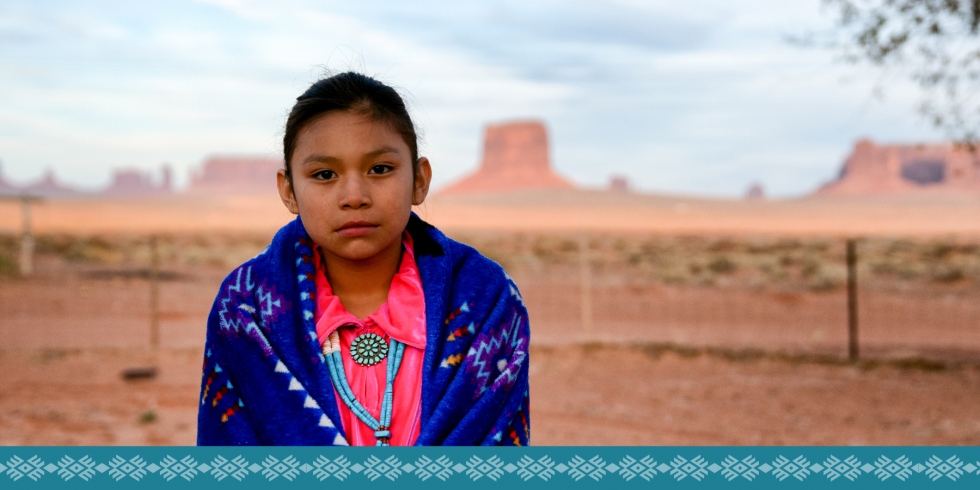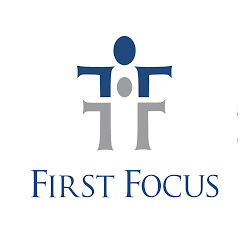On November 9th, 2022, the U.S. Supreme Court will hear the Brackeen v. Haaland (21-377) case.[i] The case could determine if the Indian Child Welfare Act (ICWA), enacted by the U. S. Congress in 1978, is constitutional. Since it was enacted, ICWA has served as a vital protector of the rights of Native American children, culture, and the longevity of Tribal sovereignty.
Child welfare professionals, child custody agencies, and family services agencies have viewed ICWA as the gold standard in child welfare practices. At the heart of ICWA is protection of Native American children from being ripped away from their relatives and communities. ICWA set the requirements at the federal level for proceedings when a child, who involuntarily enters foster care placement, termination of parental rights, or adoption, is a member or eligible member of a federally recognized tribe.[ii]
The Case
In Brackeen v. Haaland, the plaintiffs assert ICWA is an unconstitutional law and allege it is a race-based policy that violates the Constitution’s equal protection clause and requires state governments to implement unlawful federal policies. The U.S. government’s defense of ICWA is that the relationship between Tribal Nations and the U.S. is seen as sovereign-to-sovereign nations and that American Indians and Alaska Natives have a political status and are not subject to a racial classification.[iii] The U.S. government and Tribal Nations are in concert with one another through treaty negotiations. The federal government has the obligation and duty to enact federal laws to uphold its commitment to protecting Native American children.[iv]
The History of ICWA
To understand the importance of ICWA, it helps to understand the background that led Congress to create and pass the act. The relationship between Tribal Nations and the U.S. Government had been in turmoil for centuries. This complicated history affected the welfare of Native American children as the U.S. government focused on the assimilation of those children.
The first assimilation strategy occurred from the 1870s to the 1930s with boarding schools. The perception of the purpose of boarding schools from the Native American communities’ viewpoint was that Native American languages, beliefs, foods, traditions, family life, jewelry, and clothing were viewed as “uncivilized” by the growing population of primarily white settlers and the U.S. Government. U.S. Army officer Richard Pratt founded the first federal Indian boarding school and in a speech in 1892, he proclaimed his philosophy of the school was to “kill the Indian [and] save the man.”[v]
During this time, thousands of Native American children were forcefully removed from their families, homes, and tribes and placed in boarding schools. The distance they traveled to these schools was often great, which left them without access to their families or community. Due to this lack of access and boarding school policies, children were deprived and kept from learning the languages and practices of their culture. Removing children from their communities and sending them to boarding schools without any investigation of maltreatment by their families or well-being was standard and not every child returned home.[vi]
The second chapter in the Native American children’s assimilation strategy occurred during the mid-1900s and lasted up until the passing of ICWA. It was unveiled during Congressional testimony how officials from the Federal Bureau of Indian Affairs and state and county social service agencies engaged in the systematic removal of Native American children from their families and into non-Native foster care families. It is estimated that 90 percent of the children removed were placed in non-Native homes and communities. By the 1970s, the percentage of Native American children removed from their families was 25 to 35 percent.[vii]
Two significant policies that pushed many Native American children to be removed from their families are as follows. From 1958 to 1967, the United States funded the Indian Adoption Project. This program partnered the federal government with state social workers to remove Native American children from their homes. Children were then placed into white families through adoptions. In 1961, states encountered many cases of child abuse and neglect, which resulted in legislation and statutes to remove children, significantly affecting low-income families. Low-income families became easy targets primarily due to receiving state social services and therefore were being closely observed. Native American families were disproportionately affected because of the high poverty rate in those communities which led to the increased rate of removal of children during that period.[viii]
This troubled relationship between the U.S. government and Native American Tribes helped lead to the passage of the Indian Child Welfare Act (ICWA) of 1978, but it took several years for it to pass. ICWA legislation received congressional hearings during the 93rd, 94th, and 95th Congress, which ran from 1973 to 1978. In 1974 the Subcommittee on Indian Affairs received pressure from several Native American Tribes and Tribal Leaders to investigate, as they called it, “the wholesale removal of Indian Children from their families and subsequent placement in non-Indian adoptive and foster homes.”[ix] The bill took roughly five years to finally pass and be signed into law.
Poverty was a key measurement utilized by state child welfare agencies to remove Native American children from families on the reservation. During the 1974 congressional hearing, the Executive Director of the Association on American Indian Affairs, William Byler, provided the following testimony.
“…state social workers believed that the reservation was, by definition, an unacceptable environment for children and would remove Indian children without providing services or even the barest investigation whatsoever.”[x]
Tribal Leaders and associations presented additional evidence to Congress of the continued systematic removal of Native American children from their families and tribes, similar to the testimony given by Byler. Ultimately the passage of ICWA established procedures and requirements for the state when dealing with a child welfare case associated with a Native American child stating, “there is no resource that is more vital to the continued existence and integrity of Indian tribes than their children.”[xi]
How ICWA Protects Native Indian Children and Tribal Sovereignty
ICWA’s protection provides active protection to prevent the breakup of families by involving the child’s parents and Tribe in the proceedings. If it is ultimately determined a child must be removed from the home, the child’s parents and Tribe must be notified and involved in the proper placement of the child if at all possible.[xii]
ICWA also established procedures that states must follow when dealing with an ICWA case. The state must recognize tribal jurisdiction over decisions about Native American children, which is significant because jurisdiction over child welfare custody cases explicitly acknowledges tribal sovereignty. The law also establishes minimum standards for the removal of Native American children, and if removal is determined, selection preferences prioritize placing the child with extended family, a family within the same tribe, or other Native American family. ICWA also ensures that if parental rights should be terminated, birth parents relinquish their parental rights voluntarily.[xiii]
Why the Outcome of Brackeen v. Haaland Could Be Devastating to Tribal Nations and Their Children – And What You Can do About it!
While Brackeen v. Haaland may appear, on the surface, to be a case about one family and their efforts to adopt a Native American child, the outcome of this decision has far more potential impact on the constitutionality of ICWA and tribal sovereignty in general. The Indian Child Welfare Act galvanized in Federal law the recognized government-to-government relationship the United States has with Native American Tribes and Nations.
For those concerned about the sovereignty of Tribal Nations and children of these communities, it is critical to spread awareness about Brackeen v. Haaland and the potentially devastating impact of the Supreme Court’s decision. Another way to lend support to ICWA is to help advocate for the consideration of a tribal-state agreement for a state ICWA policy in Utah similar to an agreement codified in seven other states including Michigan, Minnesota, Nebraska, New Mexico, Oklahoma, Oregon, Washington, and Wisconsin.[xiv]
In Utah, you can connect with the Utah Division of Indian Affairs, or the Utah Department of Health and Human Services, which can assist in implementing a state ICWA policy. Another resource to consider when lobbying or advocating for ICWA to state policymakers is the Native American Legislative Liaison Committee.[xv]
Most of all, we encourage you to take time to learn about the Indian Child Welfare Act or ICWA; it is a critical piece of federal law that works to correct the maltreatment that the government inflicted on the Native inhabitants of this land. If you are interested in doing a deep-dive into the Brackeen v. Haaland case, please consider listening to the podcast This Land. The host, Rebecca Nagle, has spent the last few years investigating the ICWA case that could upend the policy and place tribal sovereignty on a trajectory of being dismantled.
References
[i] “Calendar Info - Oral Arguments Wednesday, November 9: Haaland v. Brackeen (21-376), Cherokee Nation v. Brackeen (21-377), Texas v. Haaland (21-378), Brackeen v. Haaland (21-380) Consolidated,” Government, Supreme Court of The United States, n.d., https://www.supremecourt.gov/.
[ii] “Brackeen Headed to the U.S. Supreme Court,” Native American Rights Fund Volume 47, no. No.1 (2022), https://www.narf.org/cases/brackeen-v-bernhardt/.
[iii] Native American Law and Sovereignty Institute, “Expert Q&A: Professor EagleWoman Explains Important ICWA Case Heading to Supreme Court.”
[iv] Native American Law and Sovereignty Institute, “Expert Q&A: Professor EagleWoman Explains Important ICWA Case Heading to Supreme Court,” March 10, 2022, Mitchell Hamline School of Law, n.d., https://mitchellhamline.edu/native-american-law-and-sovereignty/2022/03/10/expert-qa-professor-eaglewoman-explains-important-icwa-case-heading-to-supreme-court/.
[v] “Boarding Schools and the History of ICWA,” KIDS MATTER INC., n.d., https://kidsmatterinc.org/legal-help/native-american-children/boarding-schools-and-the-history-of-icwa/.
[vi] Child Welfare Information Gateway, “The Indian Child Welfare Act: A Primer for Child Welfare Professionals,” 2021, https://www.childwelfare.gov/pubs/factsheets/ICWA/.
[vii] Matthew L.M. Flethcher, “The Orgins of the Indian Children Welfare Act: A Survey of the Legislative History,” Indigenous Law & Policy Center Occasional Paper Series (Michigan State University College of Law: Michigan State University, April 10, 2009), https://www.law.msu.edu/indigenous/papers/index.html.
[viii] Native American Law and Sovereignty Institute, “Expert Q&A: Professor EagleWoman Explains Important ICWA Case Heading to Supreme Court”; Diane Allbaugh, “Tribal Jurisdiction Ove Indian Children: Mississippi Band of Choctaw Indians v. Holyfield,” American Indian Law Review, American Indian Law Review, 16, no. 2 (1991): 533–58.
[ix] Allbaugh, “Tribal Jurisdiction Ove Indian Children: Mississippi Band of Choctaw Indians v. Holyfield.”
[x] Flethcher, “The Orgins of the Indian Children Welfare Act: A Survey of the Legislative History.”
[xi] “25USC Ch. 21: Indian Child Welfare From Title25 - Indian,” § 1901 to 1963 (1973).
[xii] “National Indian Child Welfare Association NICWA - Resources Page,” n.d., https://www.nicwa.org/families-service-providers/.
[xiii] Flethcher, “The Orgins of the Indian Children Welfare Act: A Survey of the Legislative History”; “Frequently Asked Questions Bureau of Indian Affairs Final Rules: Indian Child Welfare Act (ICWA) Proceedings” (U.S. Department of the Interior Indian Affairs, June 17, 2016), https://www.bia.gov/bia/ois/dhs/icwa.
[xiv] “Brackeen Headed to the U.S. Supreme Court.”
[xv] “Native American Legislative Liaison Committee,” Government, Utah Division of Indian Affairs, A DIVISION OF THE UTAH DEPARTMENT OF HERITAGE & ARTS 2019, https://indian.utah.gov/native-american-legislative-liaison-committee/.






